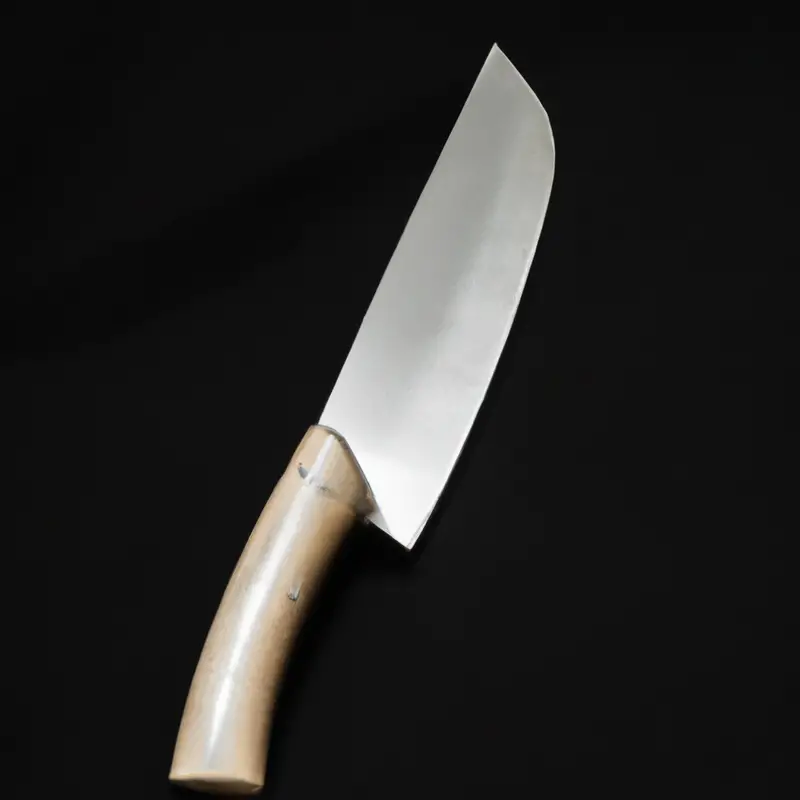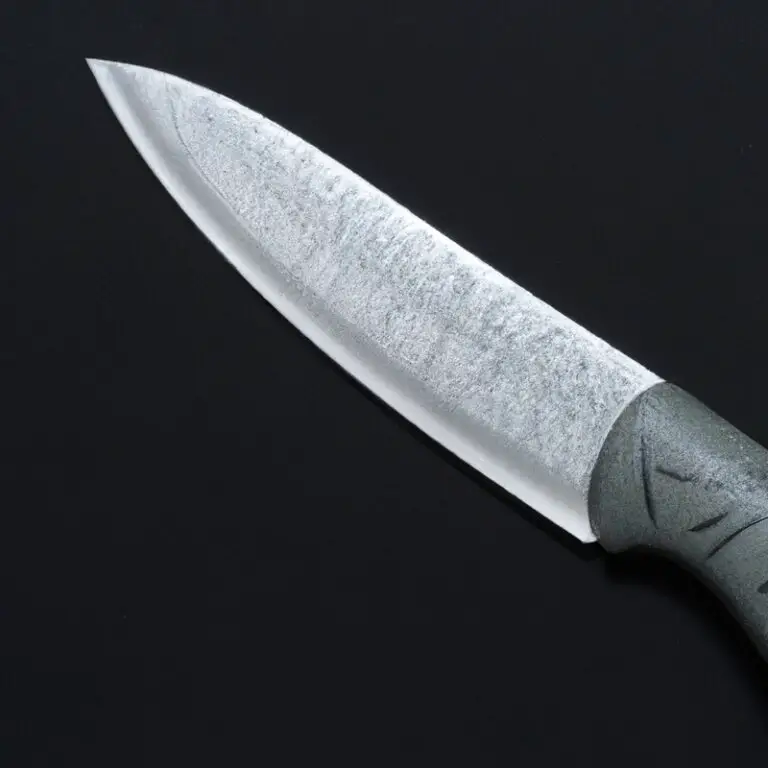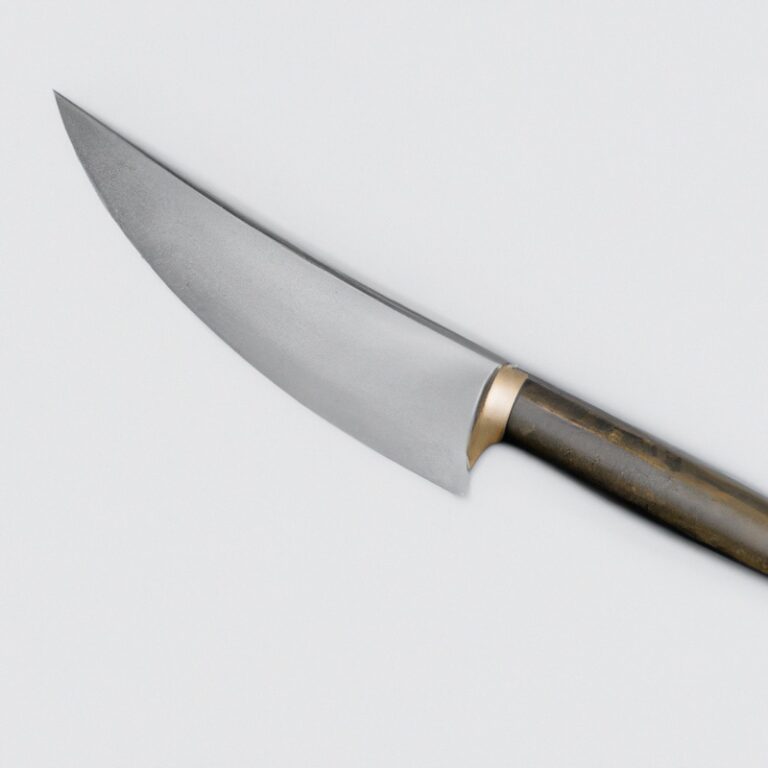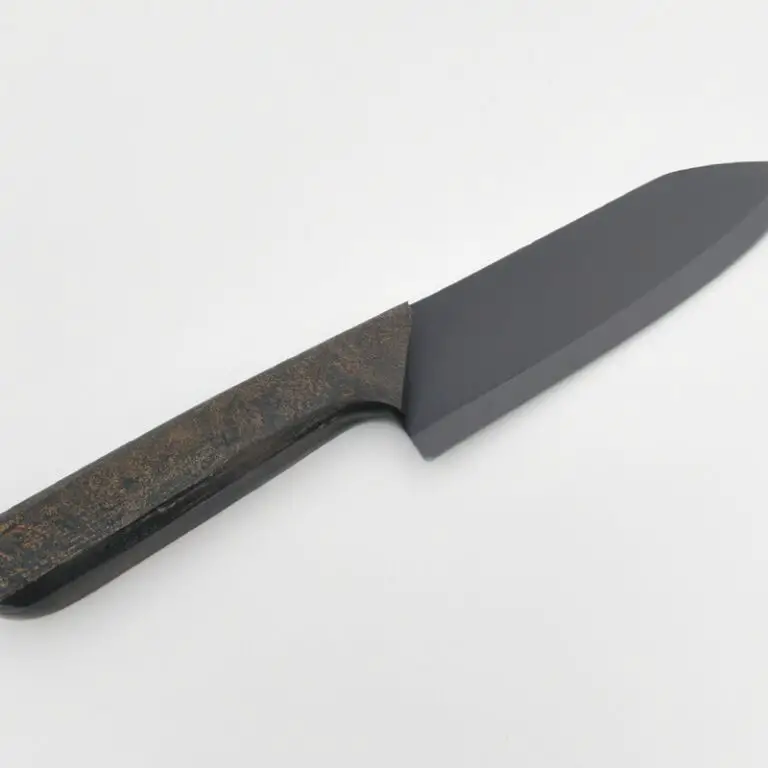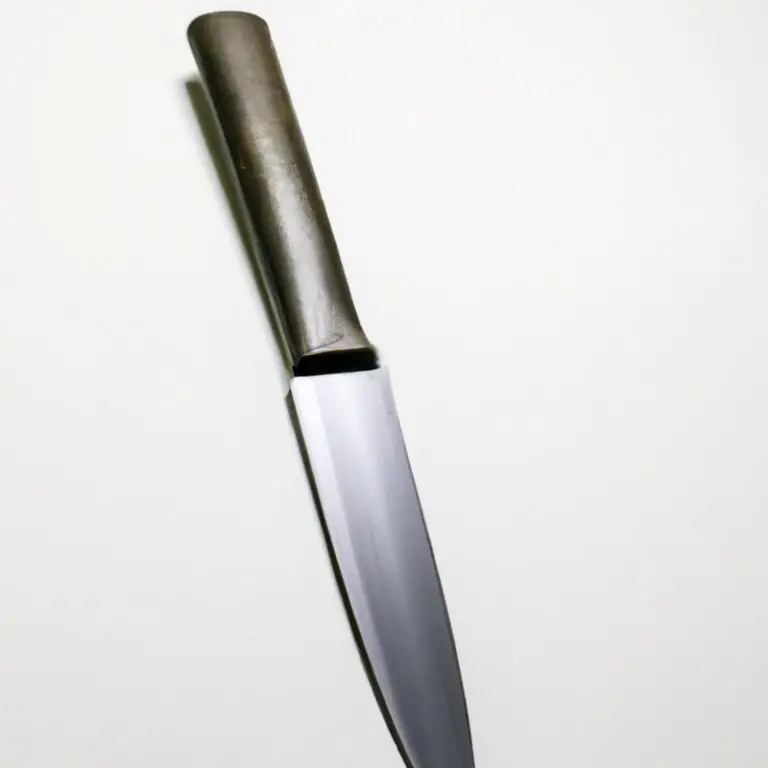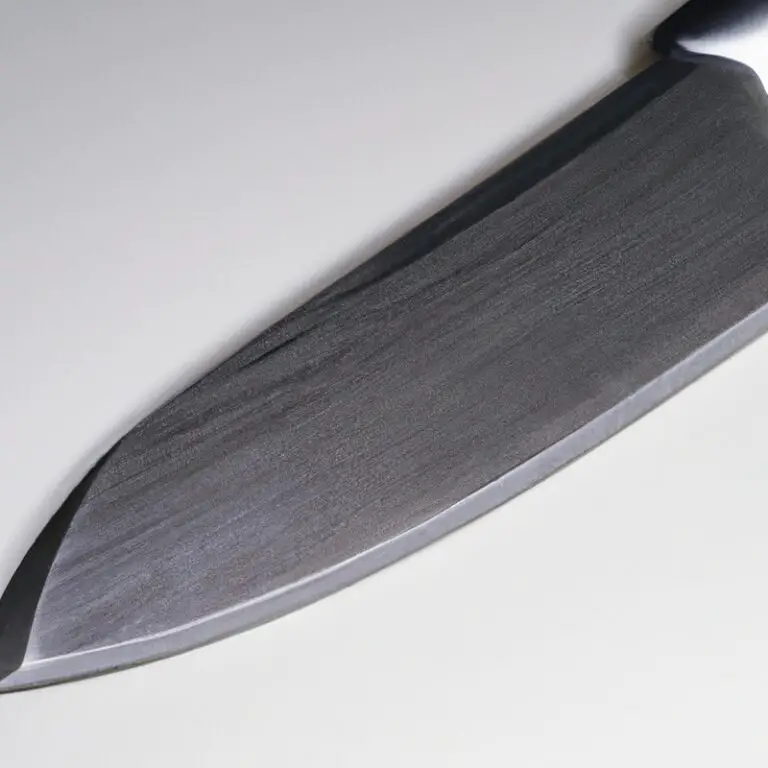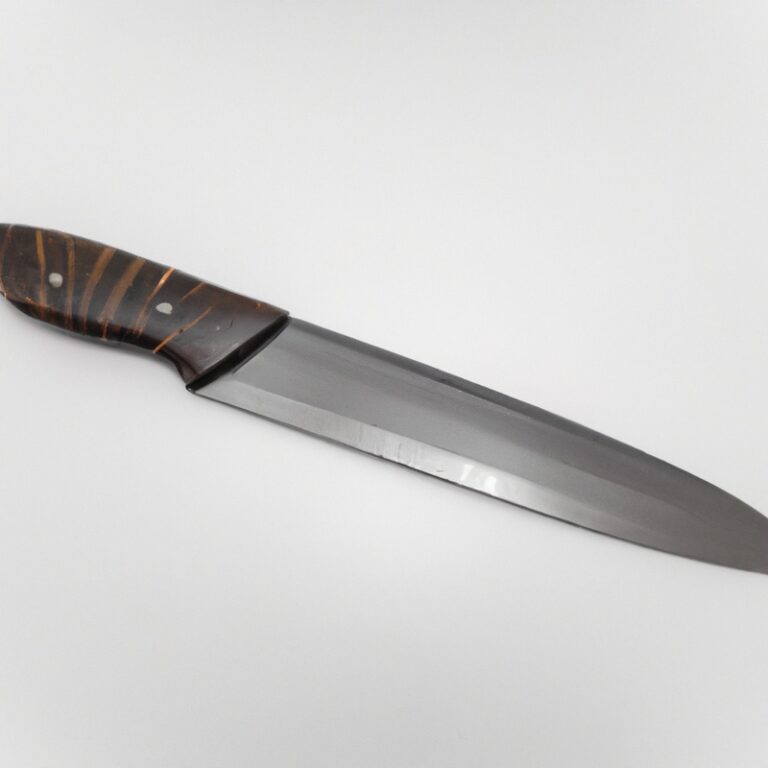How To Choose The Right Gyuto Knife Based On Your Cutting Style? – Expert Tips
Key Takeaways:
- Understand your cutting style: Choosing the right Gyuto knife requires an understanding of your unique cutting style and the tasks that you need it for.
- Look for quality materials: A high-quality Gyuto knife should be made of durable materials such as high-carbon stainless steel, and feature a well-crafted handle for optimal grip and control.
- Consider the blade length: Blade length is an essential factor to consider when selecting a Gyuto knife. Longer blades are typically better suited for slicing, while shorter ones are ideal for precision cuts.
- Don’t overspend: While a high-end Gyuto knife can be a valuable investment, don’t overspend on features you won’t use. Choose a knife that fits your needs and budget.
Are you tired of struggling with a dull knife that just can’t seem to cut through anything? It might be time to upgrade to a Gyuto knife.
But with so many options on the market, how do you choose the right one for your cutting style?
In this comprehensive guide, we’ll explore the anatomy of a Gyuto knife, how to choose the perfect blade length and weight, and which handle materials will give you the best grip. We’ll also discuss different types of grinds and offer tips for maintaining and testing your knife.
With our top brand picks, you’ll be slicing and dicing like a pro in no time.
| Gyuto Knife Type | Cutting Style | Features |
|---|---|---|
| Classic Gyuto Knife | Rocking Motion | – Curved blade for a rocking motion – Slightly curved cutting edge for chopping, slicing, and dicing – Single bevel or double bevel |
| Western Gyuto Knife | Push and Pull Motion | – Straight blade with a curve at the tip for slicing and rocking motions – More weight for better control – Double bevel – Often has a bolster for added balance and safety |
| Japanese Gyuto Knife | Slice and Precision Cutting | – Longer, thinner blade for precise cutting – Tapered blades that are thinner at the tip – Often made with traditional Japanese steel – Single bevel or double bevel – Lighter weight for agility |
| Hybrid Gyuto Knife | Multiple Cutting Styles | – Combines features of Classic, Western, and Japanese Gyuto knives – Versatile blade for various cutting styles |
Understanding the Gyuto Knife: A Comprehensive Guide
The Gyuto knife is a Japanese-style chef’s knife that has become increasingly popular in western kitchens due to its versatility and effectiveness in various cutting styles. It typically features a straight blade design, with a pointed tip, and a flatter belly compared to a Western chef’s knife.
The anatomy of a Gyuto knife consists of a blade, bolster, tang, and handle.
The blade can vary in length, width, and thickness, depending on the intended usage and preference of the user. The blade material is also a crucial factor to consider, as it can impact the sharpness, durability, and maintenance requirements of the knife.
The handle material is typically made of wood or synthetic materials, and its design can affect the balance, grip, and comfort of the knife.
The length of the blade is another crucial consideration when choosing a Gyuto knife, as it can affect the user’s cutting style, such as precision cutting, rocking, or chopping. A longer blade can provide more leverage and allow for longer strokes, while a shorter blade can offer more control and precision.
The weight of the knife is also important, as it can impact the balance, speed, and fatigue of the user.
A well-balanced knife should feel comfortable and stable in the hand, without causing any unnecessary strain or discomfort. The types of grinds available for Gyuto knives can also vary, from a flat grind to a full convex grind, and can influence the sharpness, edge retention, and slicing ability of the knife.
It’s essential to understand the differences between each grind and choose the one that matches your cutting style.
Maintaining a Gyuto knife involves proper cleaning and sharpening techniques that can extend the life and efficiency of the knife. Regularly cleaning the blade, handle, and tang can prevent rust, corrosion, and bacteria buildup, while sharpening the blade can maintain its sharpness and edge retention.
Choosing the right Gyuto knife requires understanding your cutting style, preferences, and needs, as well as the quality and reputation of the brand.
By considering all these factors, you can ensure that you use a high-quality and suitable knife that maximizes your performance and satisfaction in the kitchen.
Anatomy of a Gyuto Knife: Exploring the Different Parts
A Gyuto knife consists of several parts that make up its anatomy. The blade, handle, tang, bolster, and edge are the five main components of a Gyuto knife.
The Blade is the most crucial part of a Gyuto knife.
It’s the part that does the cutting. The blade’s shape, thickness, and material determine the knife’s performance.
The Handle is the part that connects the blade to your hand.
The handle should be comfortable to hold and have a good grip to prevent slipping. The material of the handle typically ranges from wood, plastic, metal, or composite materials.
The Tang is the part of the blade that extends into the handle.
The length of the tang affects the knife’s balance and stability. The Bolster is a thick band of metal that sits between the handle and blade.
It provides a smooth transition from the handle to the blade.
The Edge is the part of the blade that connects with the cutting surface. The edge angle of a Gyuto knife can vary, contributing to the knife’s sharpness and durability.
Understanding the different parts of a Gyuto knife is essential to choose the right knife based on your cutting style.
The Blade Material: What to Look for in a High-quality Gyuto Knife
When looking for a high-quality Gyuto knife, the blade material is a critical factor to consider. The most commonly used blade materials are carbon steel, stainless steel, and Damascus steel.
Carbon steel is known for its sharpness and durability, but it’s more prone to rust and staining.
Stainless steel is rust-resistant and easier to maintain, but it’s relatively softer and can’t hold a sharp edge as well as carbon steel. Damascus steel is a combination of multiple types of steel, creating a unique pattern on the blade.
It’s sharp, durable, and rust-resistant.
However, it can be expensive. Additionally, the hardness of the blade is measured on the Rockwell Scale, which determines its ability to hold a sharp edge.
A higher number means a harder blade, which will stay sharp longer but can be more challenging to sharpen.
When selecting a Gyuto knife, consider your preferences, budget, and cutting style to choose the best blade material and hardness for you.
Handle Material: Choosing the Right Type for Your Grip
The handle material is a crucial factor when choosing a Gyuto knife. It determines the grip and comfort level.
Here are the most common handle materials and their features:
- Wood: Wood handles provide a classic look and a comfortable grip. They are durable and are available in various types of wood like Rosewood, Ebony, and Mahogany. However, they require regular maintenance to prevent warping or cracking.
- Plastic: Plastic handles offer a lightweight and cost-effective option. They provide a good grip and are easy to clean. But, they may not be as durable as other materials.
- Stainless steel: Stainless steel handles are durable, hygienic, and easy to clean. They are commonly used in professional kitchens. However, they may not provide a comfortable grip as they can be slippery.
- Composite: Composite handles are heat-resistant, durable, and provide a good grip. They are made by combining multiple materials like wood, plastic, and resin. They are suitable for heavy usage and are easy to maintain.
Overall, the choice of handle material depends on personal preference and usage. It is recommended to choose a handle that provides a comfortable and secure grip.
Blade Length Matters: Which Length is Best for Your Cutting Style?
When it comes to choosing the right blade length for your Gyuto knife, your cutting style plays a crucial role. A general rule of thumb is that a longer blade is ideal for slicing and chopping while a shorter blade is better suited for precision tasks like peeling and paring.
Blades that measure between 8 to 10 inches are popular for versatile home cooking, while professional chefs often prefer blades that are between 10 to 12 inches long for more heavy-duty tasks.
It’s also worth noting that longer blades can be harder to control, while shorter blades can limit your cutting motions. Ultimately, the best blade length for you depends on your own individual preferences and cutting style.
Consider the type of food you prepare most often and how you handle your knife to determine which size is the most comfortable and efficient for you.
The Right Weight: How to Choose a Gyuto Knife with the Perfect Balance
The weight of a Gyuto knife can significantly impact its performance. A knife that is too heavy can cause fatigue and strain on your hand and wrist, while a knife that is too light can lack the necessary momentum and force needed for certain tasks.
The key is to find a knife with perfect balance, where the weight is evenly distributed between the blade and handle.
When shopping for a Gyuto knife, pay attention to its weight and balance. You can test this by placing your finger on the knife’s spine about an inch or two from the handle.
A well-balanced knife should feel, well, balanced, where the weight is evenly distributed between the front and back of the knife.
Additionally, consider the size and weight of the knife in relation to your cutting style and the ingredients you usually work with. If you mainly work with smaller or delicate ingredients, a lighter knife may be the best choice.
On the other hand, if you work with tougher ingredients like meat and root vegetables, a heavier knife with a thicker spine may be more suitable.
Ultimately, choosing a Gyuto knife with the right weight and balance comes down to personal preference and comfort. Take the time to test out different knives and find the one that feels most comfortable and efficient in your hand.
With the right weight and balance, you can enhance your cutting precision and efficiency while minimizing hand fatigue.
Types of Grinds: Which Edge is Suitable for Your Cutting Style?
The type of grind determines how the blade cuts, making it an important factor when choosing a Gyuto knife. There are three main types of grinds: flat, convex, and concave.
A flat grind has a straight edge from the spine to the cutting edge, resulting in a thin and sharp blade.
This grind is great for precision cutting and slicing vegetables and fruits. A convex grind has a curved edge, making it ideal for chopping and slicing thicker cuts of meat.
It also provides additional strength and durability to the blade.
A concave grind, also known as a hollow grind, has a concave curve from the spine to the cutting edge. This type of grind is suitable for cutting through bone and tough meats.
When choosing a Gyuto knife, consider your cutting style and the tasks you will primarily use it for.
If you mostly work with fruits and vegetables, a flat grind may be the best option. For meat lovers, a convex grind may be more suitable.
It’s important to choose the right grind to ensure efficiency in the kitchen and extend the lifespan of the knife.
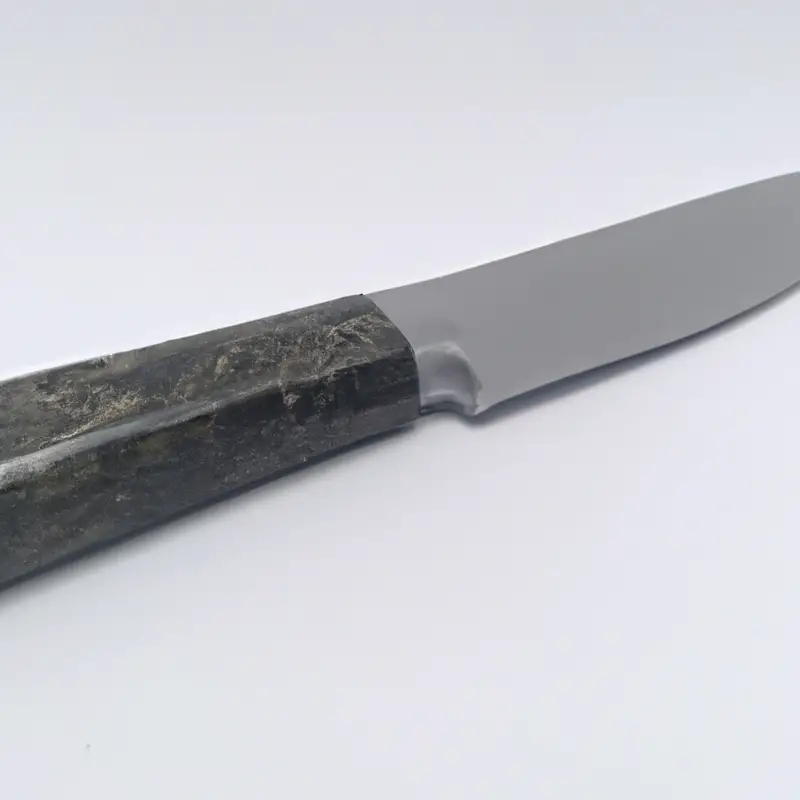
Maintaining Your Gyuto Knife: Tips for Cleaning and Sharpening
Maintaining your Gyuto knife is essential for its longevity and optimal performance. Here are some tips for cleaning and sharpening your knife: Cleaning:
- Wash your knife with soap and water after each use.
- Dry it thoroughly before storing to prevent rust.
- Avoid putting your knife in the dishwasher, as it can damage the blade and handle.
Sharpening:
- Sharpen your knife regularly for efficient cutting.
- Use a sharpening stone or honing rod.
- Maintain the original angle of the blade while sharpening.
- Avoid using an electric sharpener, as it can damage the blade.
With proper maintenance, your Gyuto knife can last for years and provide excellent performance for all your cutting needs.
Testing Your Gyuto Knife: How to Know if it’s the Perfect Match
To test if your Gyuto knife is the perfect match for you, there are a few things you can do. First, check its sharpness by cutting through a piece of paper.
The blade should slice through easily with no tearing or jagged edges.
Next, try chopping different ingredients to see how the blade feels in your hand. Make sure it feels comfortable and balanced.
If the knife feels too heavy, too light, or awkward in any way, it may not be the right fit for you.
Pay attention to the blade length as well. A longer blade may be suitable for cutting larger ingredients, while a shorter blade may be better for more precise work.
Finally, consider the grip.
If the handle of the knife doesn’t feel comfortable in your hand, it may cause fatigue or even become dangerous to use. Ensure that the handle feels secure and provides a good grip.
By considering these factors, you can determine if your Gyuto knife is the perfect match for your cutting style.
Remember to also consider maintenance and the overall quality of the knife before making your final decision.
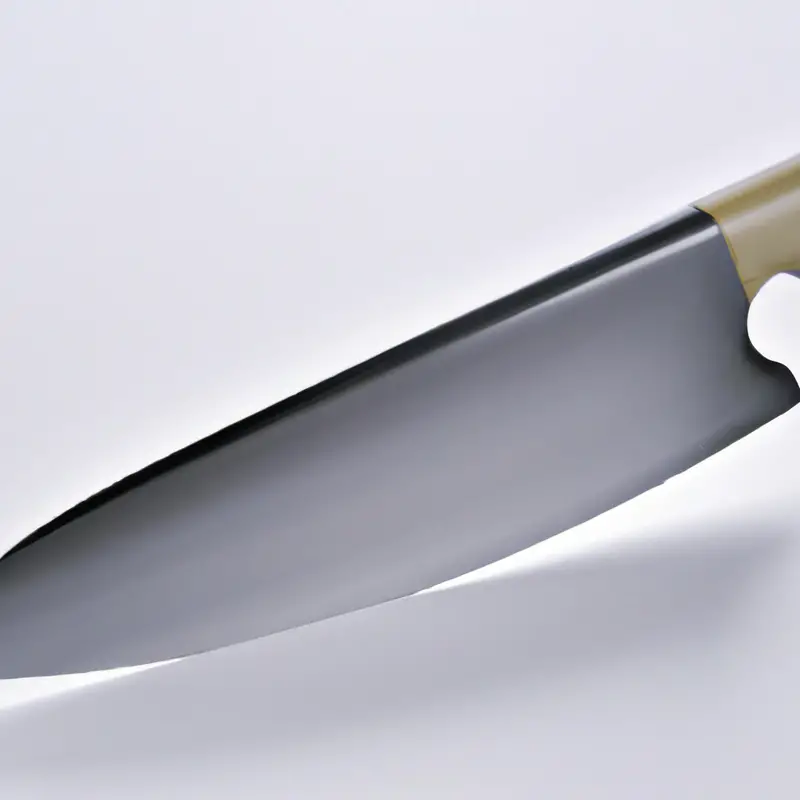
The Best Brands for Gyuto Knives: Our Top Picks for Quality and Affordability
1. Our Top Picks for Quality and Affordability
After careful research and analysis, we have identified some of the top brands for Gyuto knives that provide excellent quality and affordability for various budgets. They include:
- Shun: Known for its elegant and durable design, Shun’s Gyuto knives are made with high-quality materials and boast sharp and agile blades.
- Wusthof: A German brand that has been in the market for over 200 years, Wusthof’s Gyuto knives are quite popular for their precision, balance, and fantastic quality.
- Tojiro: This Japanese brand offers affordable and durable Gyuto knives made with VG-10 steel that is corrosion-resistant and holds an edge for longer.
- Global: Recognized for its unique design, Global’s Gyuto knives have thin and lightweight blades made with high-quality steel that ensures a sharp and smooth cut.
- Mercer Culinary: For those on a budget, Mercer Culinary provides high-quality Gyuto knives with a comfortable grip and sharp blade without breaking the bank.
These brands have earned their reputation over time and consistently provide quality and value for their customers. Keep in mind that the best brand for you ultimately depends on your cutting style and preferences.
Final Verdict
Selecting the right Gyuto knife for your cutting style is crucial for efficient and enjoyable meal preparation. By considering factors such as blade length, weight, grind type, handle material, and blade material, you can make an informed decision that will guarantee a satisfying experience with your knife for years to come.
Remember to maintain and test your knife regularly for optimal performance, and don’t forget to consult our top picks for quality and affordability.
As you embark on your quest for the perfect Gyuto knife, take comfort in knowing that the information presented in this guide is reliable and expert-approved. Happy cutting!

